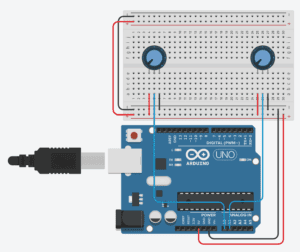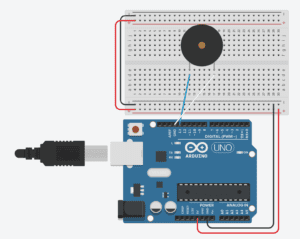PROJECT TITLE
Are Bullied Emotional Trash bin?
PROJECT STATEMENT OF PURPOSE
As can be seen from the project title, the purpose of this project is to make users feel like they are bullied. Through this project, I seek to shock people by giving them hands-on experience with the experience of viewing in first-person’s point-of-view of getting bullied. The feeling of scared, guilt, sadness, disgust. All of those emotions above would be intended for this project.
PROJECT PLAN *
Explain in further detail what your project aims to do. Flesh out your project’s process through careful description, analysis, and with specifics. What steps will you take to empathize with your intended audience and analyze their needs/requirements? Compose a detailed project plan that explains each of the steps you will take in the next few weeks to deliver your project. Be specific about when you need to finish which part of your project to finish it on time.
Although we have grown up from the main bullied ages, we are still college “students” who are vulnerable to getting bullied. In fact, there are a lot of cyberbullying going on, which counts towards people of all ages. I hope through this project, people would walk away with a feeling of sadness and terror that they would be willing to stand up if they see the ones getting bullied.
Because of the probable loudness within the room demonstrating this project, 1. Isolate the user in the small room (maybe we can use a black curtain to make up a small space where the user can go in?)
2. I am going to make the user use their earphone (Bluetooth earphone to ensure the user can move) listen to the audio.
3. The room would in more or less in a dark hallway form so the user can walk straight. If there are mannequins standing in the sideways, it would be great. But if it is not available, I would try to film the video of walking in NYU hallway as if I am a transparent person where everybody is ignoring me (or looking at me but are spreading rumors about me).
4. At the end of the hallway, there is a computer, which would work as a user’s computer. They would already feel strange by walking in the hallway. The distance of the user would be measured with the distance sensor. If the user walks up close to the computer, all of a sudden, there would be a notification on the side of the computer (through coding).
5. If the user clicks on the notification, there would be a short greeting message like “Yo you there?”.
6. The user will be able to click on the buttons to have a conversation with the fake person.
7. The computer starts receiving bullying messages.
8-1. If the user gets surprised and aims to walk away (also measured with the distance meter. if the user goes further than set amount of distance), there would be a message on the screen and the sound also through their bluetooth earphone saying “You might only feel it for these few minutes, the bullied have to go through this trauma all the time. A lot of people often still having difficulties from their childhood bullied experience.” and so on.
8-2. If the user successfully continues, the user will hear the voices through their earphone as he/she is receiving the messages as if they are speaking to them right next to the user.
9. After the user is finished with the messages, the user will be shown statistics about bullying.
10. Outside the room would be an arduino-connected printer, a projector, and a 3D printed trash looking bin.
11. Through coding, the camera would take picture of the user (without them knowing as they go through the messages), the projector will screen the person’s face on the trash bin (because that is what the bullied are often used as – emotional trash bin where they can throw out their anger and negative emotions towards). As the user goes through messages, the printer will put papers (which has the bullied words that the user receives through the screen) in the trash bin.
CONTEXT AND SIGNIFICANCE *
Of course, there are three different types of people in the bullying scene: the bully, the bystander, and the bullied. The user is going to feel from the perspective of the bullied. I choose the bullied over anything else because the tragedy and the pain of bullying situation can only be felt through hand-on experience from the perspective of the bullied. The bully does not remember all the people he/she has bullied. If we were to make the hand-on experience for users with the first-person point-of-view of the bully, the purpose would be to make that user guilty for what the user has been doing. Although he/she may feel guilty, it would not be as effective as forcing the user to go on experience as if the user is bullied.
This project is significant. Though there have been a lot of the people with the experience of getting bullied, there are still some people who have not got the experience of getting bullied just like my roommate. When I asked my roommate whether she knows how bad it is to be bullied, she would merely guess how bad would it be, but only has a vague idea about it. Through the first-person point-of-view in the perspective of the bullied, the user, hopefully, would walk away from my project with how bad it would be to be bullied by others.
Although we have grown up from the main bullied ages, we are still college students who are vulnerable to getting bullied. In fact, there are a lot of cyberbullying going on, which counts towards people of all ages. I hope through this project, people would walk away with a feeling of sadness and terror that they would be willing to stand up if they see the ones getting bullied.
This is related to our reading, Language of New Media by Manovich which describes the influence of computers on new media. We are currently living in a world where computers are everywhere. True, as I mentioned from the previous recitation blog posts, computers have had positive effect towards the human. Because we have the computers, we are able to communicate with people who are on the other side of the Earth, easily being able to find information and so forth. However, at the same time, they also had a negative impact towards human: it also has gotten easier for people to bully others. When people are online, they do not need to face the ones they are bullying. As a result, they would not feel guilty about saying mean things to other people online.


 2.The following article (in Chinese) is a report which suggests many young girls are in
2.The following article (in Chinese) is a report which suggests many young girls are in